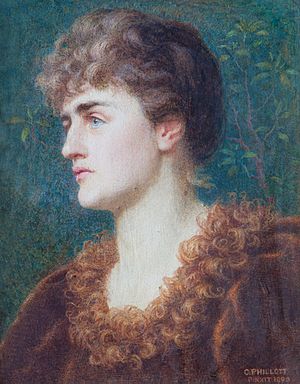Eugénie Sellers Strong facts for kids
Eugénie Sellers Strong (born Eugénie Sellers; 25 March 1860 – 16 September 1943) was an important British archaeologist and art historian. She helped lead the British School at Rome from 1909 to 1925. After studying at Girton College in Cambridge, she became the first female student allowed into the British School at Athens in 1890. She also studied art history in Germany. She wrote many books about ancient Greek and Roman art and sculptures.
Contents
Early Life and Education
Eugénie Sellers was born in London on 25 March 1860. Her father, Fredrick William Sellers, was a wine merchant. Her mother, Anna, came from a noble French family. Eugénie was baptized in Paris, France.
Her family traveled a lot around Europe. She went to school in Spain with Jesuit priests. Later, she attended a convent school in France. After leaving school in 1877, she traveled with her family in Italy and Greece.
Both of Eugénie's parents died before she started at Girton College, Cambridge in 1879. There, she studied Classics, which included ancient Greek and Roman history, language, and literature. At that time, the University of Cambridge did not give official degrees to women, even if they completed their studies.
Academic Achievements
After leaving Cambridge, Eugénie taught at St Leonards School in Scotland. A year later, she moved to London. She studied at the British Museum under Sir Charles Newton, a famous archaeologist. The University of St Andrews gave her an honorary degree after her first book was published.
In 1890, she became the first female student at the British School at Athens. She studied there for a year. She also translated a German book about the excavation of Troy into English, which was published in 1891. She continued her art history studies in Munich, Germany.
Marriage and Later Career
In 1897, Eugénie married Sandford Arthur Strong, who was also an art historian. He worked as a librarian and curator for the Duke of Devonshire at Chatsworth House. They did not have any children. After her husband died in 1904, Eugénie continued his work at Chatsworth House for a few more years.
In 1906, she became a member of the German Archaeological Institute. She helped write the catalogue for an important "Greek Art" exhibition in 1903. She also wrote several books about classical art and sculpture. She even wrote two chapters for the Cambridge Ancient History about Roman art.
In 1910, Eugénie Strong became a research fellow at Girton College. From 1909 to 1925, she served as the Assistant Director of the British School at Rome. She lived in Rome until she died in 1943. She was buried in the Campo Verano cemetery in Rome.
Awards and Recognition
Eugénie Strong received many honors for her work. In England, she was made a Commander of the Order of the British Empire (CBE) in 1927. The British Academy gave her the Serena medal in 1938 for her studies of Italian culture. She also gave important lectures in 1920 about painting in the Roman Empire.
In Italy, she was elected to several important groups, including the Lincean Academy. She received a gold medal from the city of Rome in 1938.
Selected Works
Here are some of the books Eugénie Sellers Strong wrote or helped create:
- (1895) Masterpieces of Greek Sculpture: A Series of Essays on the History of Art (She edited and translated this book by Adolf Furtwängler)
- (1907) Roman Sculpture from Augustus to Constantine
- (1915) Apotheosis and after life: three lectures on certain phases of art and religion in the Roman Empire
- (1929) Art in Ancient Rome
See also
 In Spanish: Eugénie Sellers Strong para niños
In Spanish: Eugénie Sellers Strong para niños


